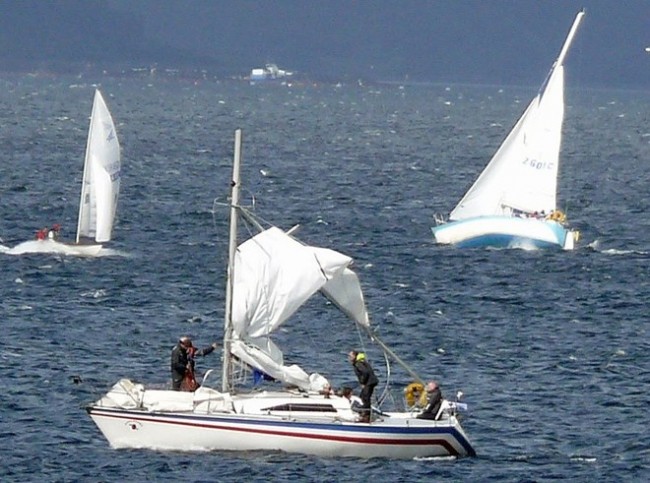
If the wind is going to roar this winter, your rigging needs a check.
Sail-World picked up a post from Captain John at Skippertips that lists the most vital rigging checks you need to make.
Sailing Rigging Inspection Checklist:
Just as pilots of aircraft large or small wouldn’t think of taking off without their standard checks, neither should the competent skipper. Put these five inspections on your sailing checklist to keep your sailing rigging strong and secure.
1. Shroud and Stay Cotter Pins:
Cotter pins are those nautical bobby pins that hold your standing rigging together. Cruising sailboats can have dozens of these vital fasteners. Look for cotters in the ends of the stays, shrouds and the headsail furling drum.
Often, cotter pins on sailboats are shaped and trimmed the wrong way. In some cases, they may be missing. Cotter legs should be shortened–not bent back against the cotter body. You must be able to remove a cotter pin fast in an emergency. Follow these easy steps:
How to Size a Cotter Pin
a. Use cotter that fits snug into the hole of a clevis pin.
b. Shorten the legs to 1½ X the diameter of the clevis pin.
c. Spread the legs 25-30 degrees.
d. Dab the ends with silicone.
e. Do not tape over cotters–this prevents inspection.
2. Loose Shackle Pins:
Slippery stainless steel shackle pins have a nasty reputation of backing out of shackle jaws. This can result in a lost mainsail or Genoa halyard, block failure, or cause your anchor rode to part.
The photo shows a turning block we found while delivering a yacht offshore. Its pin had backed out about halfway and was being held in place by a mere sliver of screw threads. A plastic wire tie solved this problem fast and easy. Carry a bag of long, thin plastic ties. Mouse (lash) the pin to the shackle body to keep shackle pins in place.